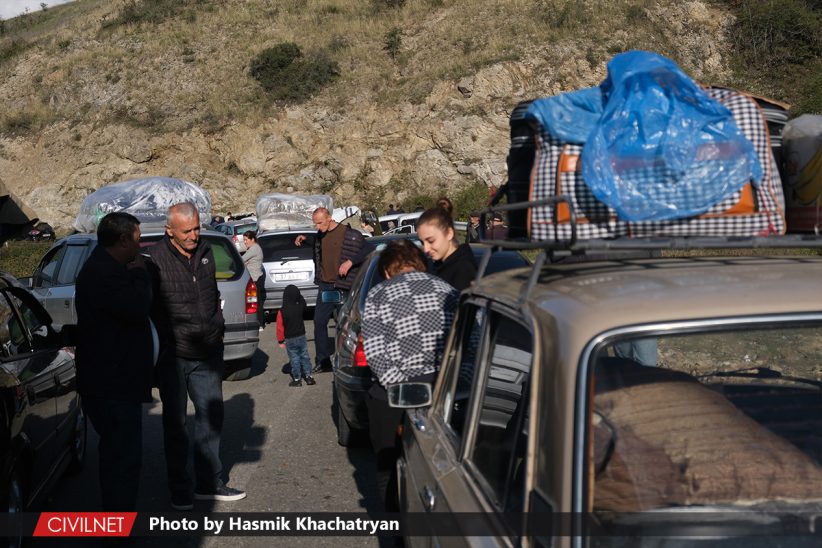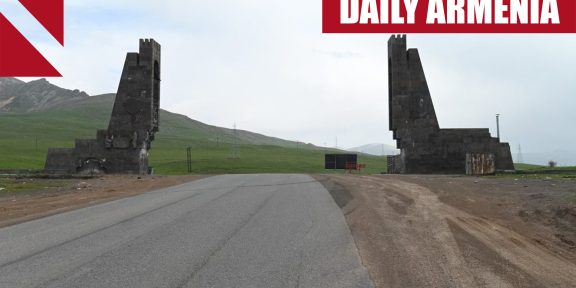By Skylar Yoder
On the way out of Yerevan, the seemingly endless lines of grape vines used for wine cultivation stood out. Perhaps even more striking though, was the contrast between the colorful, lush landscape and the dark, gray clouds hanging over it. Perhaps this is a useful metaphor for the atmosphere in Armenia at the moment – stunning beauty and rich history shrouded, at least temporarily, in a heavy darkness.
As we passed through the town of Yeraskh, which sits on the edge of the border with Azerbaijan’s Nakhchivan enclave, we could easily see the Azerbaijani flags dotting military installations at the top of the hills. Moving along the road, there were many small fortifications used by the Armenian Defence Forces. These are made necessary by the frequent shelling the area faces from Azerbaijan.
A few hours later, we reached the town of Vayk, a key location in the Vayots Dzor province where the forcibly displaced people from Artsakh made their way to be registered and receive critical aid before moving on to other locations in Armenia. As we passed through the large pillars indicating we were entering the province of Syunik, the landscape shifted and we continued to climb higher into the mountains.
Following Azerbaijan’s large-scale attack on Nagorno-Karabakh on September 19, more than 100,000 ethnic Armenians from the region have fled to the Syunik province of Armenia, where they have been registered and received initial humanitarian aid before moving on to other parts of the country.
Our driver expertly navigated the winding, steep roads for the next several hours until we reached our first destination – the CivilNet office in Goris. There, we watched workers from the United Nations Children’s Fund (UNICEF) busily loading boxes into their vehicles to transport goods to families in need, as well as members of the European Union Observation Mission come and go.
The town square in Goris is much quieter than I had expected. The tents used by the International Committee of the Red Cross (ICRC) to register, provide aid, and even shelter some of the forcibly displaced persons had already been dismantled and a group of young men were helping load them into the back of a truck. We also observed a queue of people outside the City Hall, waiting to receive food.
From there we walked to the Hotel Goris, which has been housing hundreds of forcibly displaced persons at a time since the mass exodus from Nagorno-Karabakh. Outside the entrance, a large truck was being used by the International Organization for Migration to assist those in need. In the hotel’s courtyard we saw several families, including an expecting mother, looking on as children ran around and played ball. Inside, the ICRC has set up a children’s area, where kids ranging in age were passing the time playing games, doing crafts, and talking.
.
As we began the drive back towards Yerevan, rain and a dense fog surrounded us for a few intense minutes. Soon we could see the sun setting over the fields and distant mountains, suggesting that brighter days are to come.
Skylar Yoder recently finished her master’s degree in Conflict, Security, and Development at King’s College London. She is an intern at CivilNet’s English division.
















